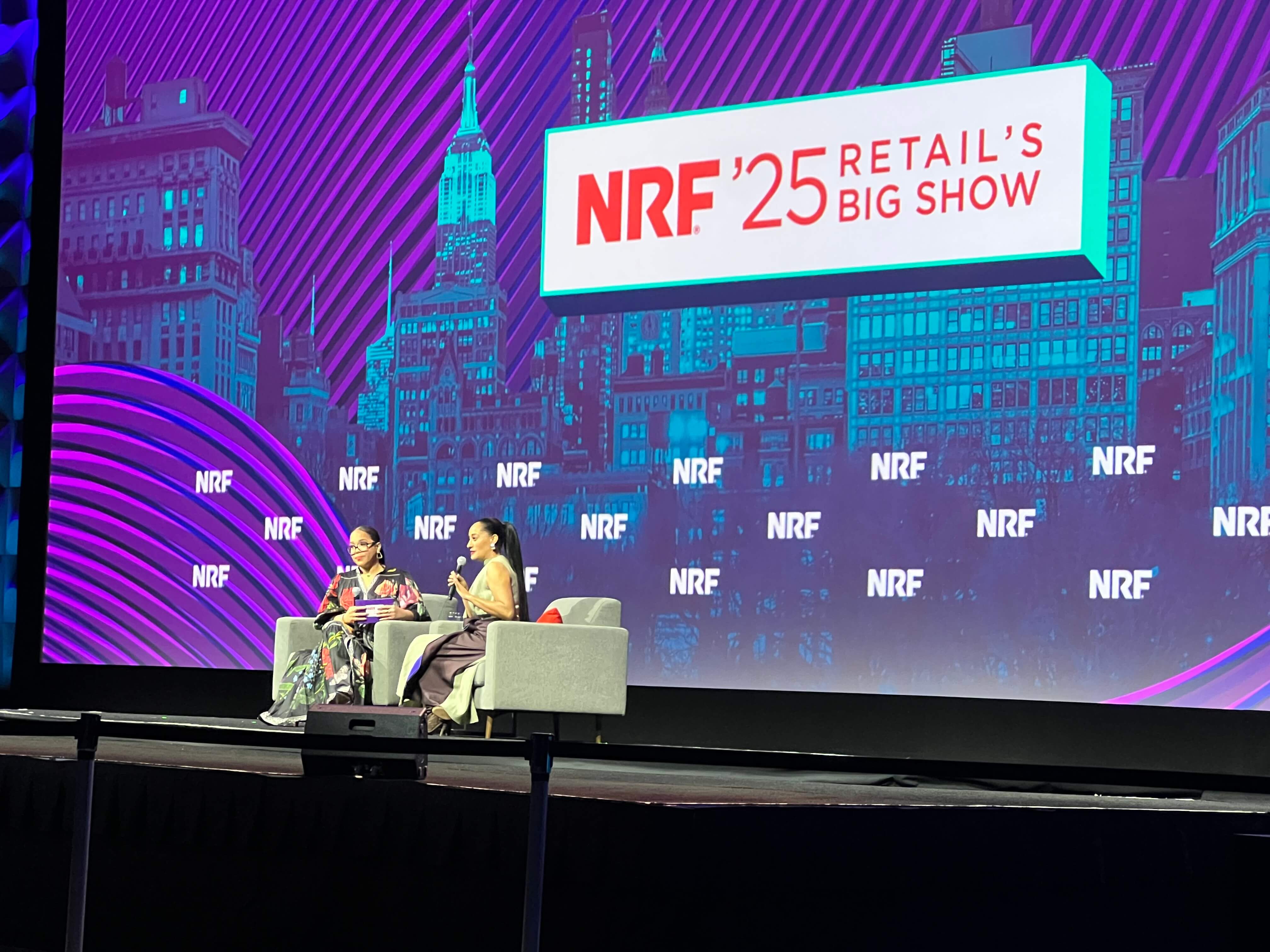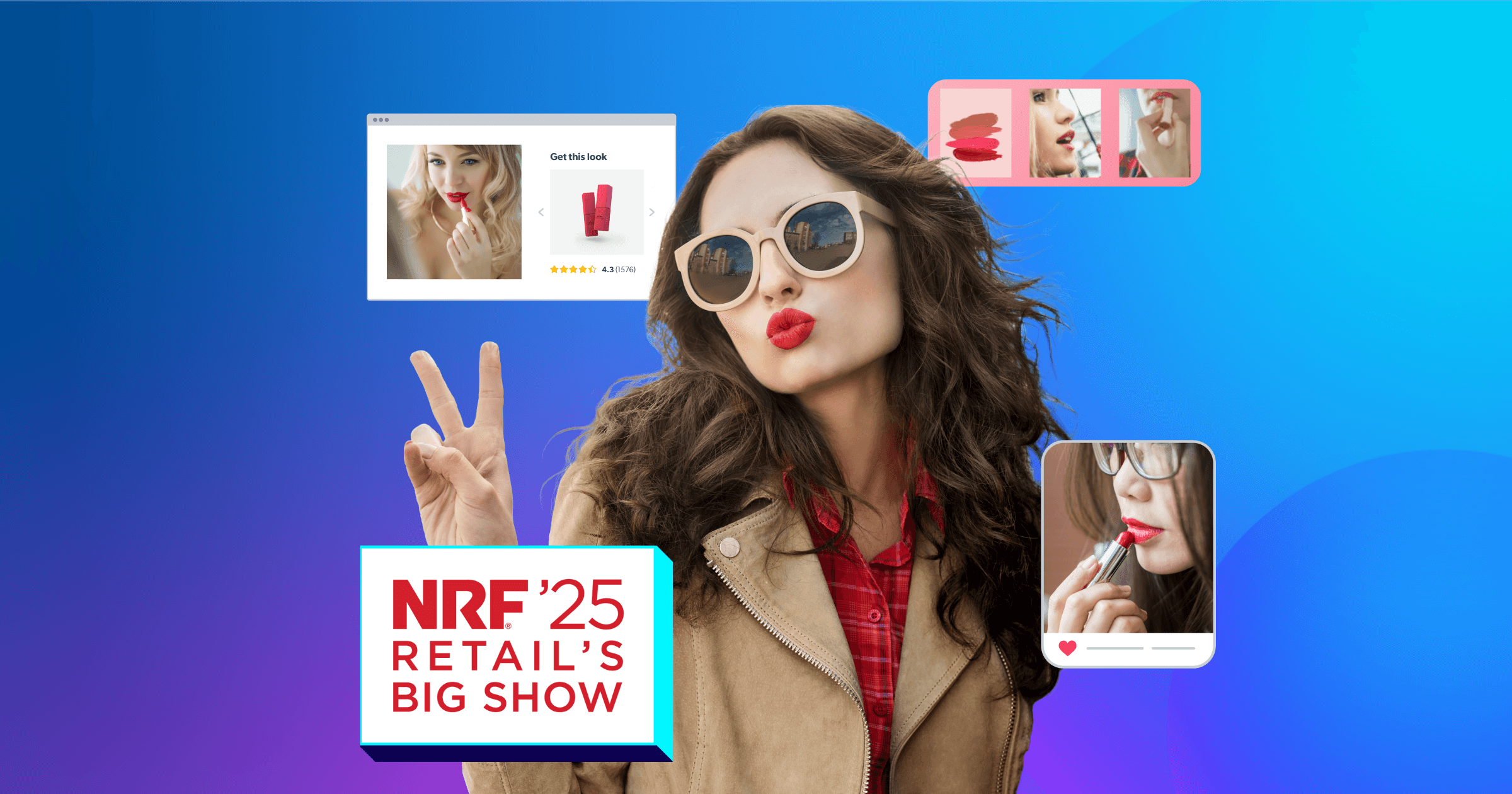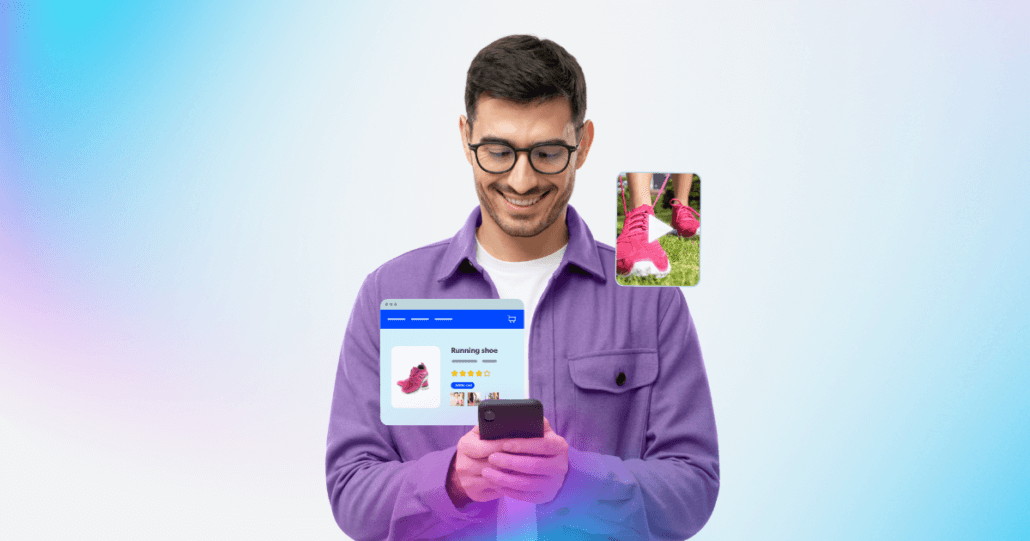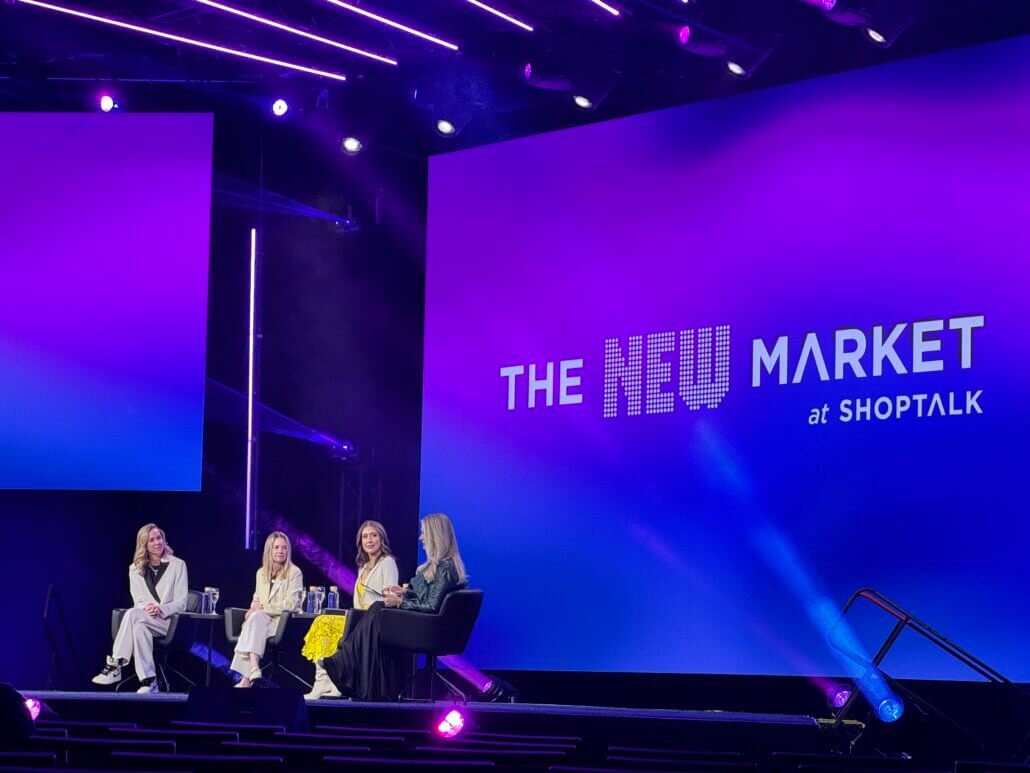February 4, 2025
The 7 Hottest Topics and Takeaways from NRF 2025
The Bazaarvoice team recently had the opportunity to be a part of NRF Retail’s Big Show in New York City, and with over 40,000 attendees, the show was buzzing about the future of retail. It’s clear that a transformative wave is sweeping through retail and advanced technologies are re-shaping the way that businesses design their customer experience.
From in-store innovation to personalized experiences, retail media engagement, and fostering community, we’ve pulled together the seven most compelling trends and takeaways that emerged from NRF 2025.
1. In-Store Innovation
After years of focusing on their customers’ digital experience during the pandemic, retailers are responding to customers’ deep desire for connection by elevating their in-store experiences.
Industry leaders like Sephora are driving this charge in a variety of ways. In one keynote address, Sephora highlighted how they’re leveraging their digital skin scan tool to match each customer with optimal makeup selections. It’s important to note that Sephora is using this new tool to spark meaningful conversations between customers and their beauty advisors—it’s not intended to replace the in-store experience, but rather to enhance it.
2. AI for Efficiency and Innovation
AI continues to be a cornerstone of retail innovation, enabling businesses to transform customer experiences through automation while maintaining human-centric value delivery.
For example, QVC is using AI to analyze live broadcast performance data and adjust their selling strategies on the fly. Sam’s Club is using Scan and Go technology so that members can scan items, pay via the app and bypass the checkout line. Other companies are implementing AI to re-write product titles in real-time that more closely align with each customer’s search queries, making it easier for shoppers to quickly find what they’re looking for.
3. Empowering Frontline Employees
While AI has been at the forefront of simplifying processes through automation, retailers have been upskilling and investing in their employees to elevate the human-to-human element of in-store shopping.
One notable example of this came from Foot Locker. The shoe retailer is empowering their in-store associates with technology, product knowledge, and incentives to continue building strong customer relationships. Similarly, Sephora has been investing significant time and effort to reinforce the retailer’s core values—transparency, trust, and quality—since these are especially important to their younger, and more discerning, customers.

4. Personalized Experiences
Retailers are using first-party data to deliver personalized recommendations, shopping experiences, and communications. As one of the Sam’s Club executives said, “We’ll personalize everything from the message, to imagery, to the tone in which we speak to you.” Sam’s Club also implemented a smart re-order capability into their food and casuals business that learns and adapts based on purchase history, frequency, and shopper preferences.
At the same time, another company is rolling out their new fit recommendation technology. This innovation aggregates return-shopper data and customer reviews to provide personalized fit suggestions, such as: “Buy a size large; customers like you find the sleeves slightly short.”
5. Seamless Omnichannel Integration
Online shopping is very common nowadays, but by bringing omnichannel integrations into the physical retail space, retailers are able to elevate their operational efficiency and customer experience across digital and in-person touchpoints.
Thanks to Sephora’s robust mobile app and real-time inventory data, one in four of their customers are now using their mobile device to check out with a sales advisor. You’d only need to walk the expo floor to discover other similar, exciting innovations that forecast stock levels, utilize digital price tags, and display UGC in-store through digital signage.
6. Focus on Community & Storytelling
Many of today’s young shoppers crave authentic community—particularly Gen Z—and they’re discovering this connection through some of their favorite brands.
One of the best examples of this can be seen through Rare Beauty, the cosmetics company founded by Selena Gomez. Rare Beauty is engaging authentically with their Gen Z community through a number of channels, such as:
- Hosting Zoom chats and “Rare Chats” to connect directly with their community.
- Working closely with creators on TikTok Shop for product tutorials.
- Organizing offline events, such as makeup masterclasses and mental-health-focused activities to help their customers and establish a long-lasting community.
7. Retail Media Networks
According to the Interactive Advertising Bureau (iab), “the physical store is the next major media channel”. Many retailers recognize the incredible opportunity of Retail Media Networks (RMNs), but the lack of standardization is a “significant barrier for nearly 60% of buyers when considering investing in retail media.” Retailers are also struggling with how to leverage RMNs to create demand among their shoppers, and not just capture demand. Regardless, retailers are continuing to experiment with RMNs within the framework of their business models to drive value among consumers and advertisers. The focus on digital and in-store retail media (and content) is expected to continue ramping up through 2025.
NRF 2025 illuminated a roadmap for the future of retail, marked by AI transformation, personalization, community engagement, and, above all, excitement for the future. By embracing these trends, retailers and brands can chart a collaborative path towards sustainable growth and customer-centric excellence. As we look ahead, integrating these innovations into business models will be essential for staying competitive and building deeper connections with consumers in 2025 and beyond.






